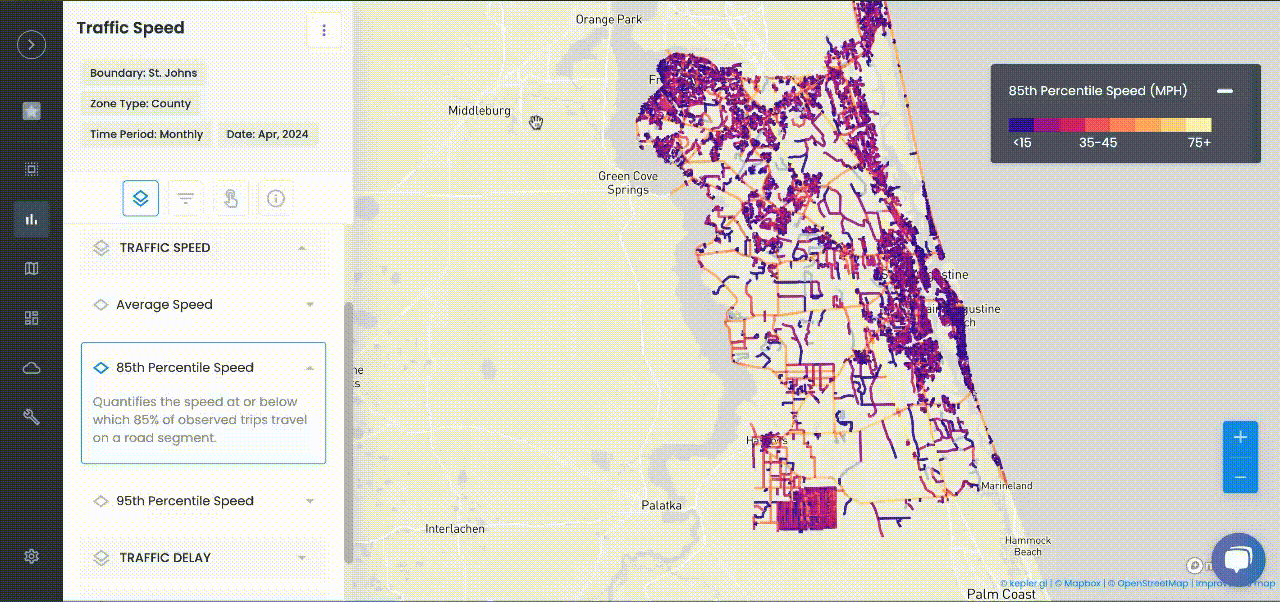
Transportation Planning
Building Resilient Cities: Digital Twins for Disaster Management and Climate Adaptation
Digital twins help cities prepare for floods, wildfires, and climate change with smarter disaster planning and climate adaptation strategies
Learn how digital twins help cities prepare for floods, wildfires, and climate change with smarter disaster planning and climate adaptation strategies.
In a time when extreme weather and natural disasters are common, it's super important for cities to be tough and adaptable. Digital twin tech makes it easier for city planners to get ready for emergencies by simulating disasters and testing out strategies ahead of time. For instance, a digital twin can show how a flood might move through neighborhoods or how power outages could impact critical services. These virtual tests let officials plan smarter responses and investments before disasters hit.
Simulating Disasters and Emergency Plans
- Flood and storm simulations: Planners can enter rain, river levels, and storm surge data into the digital twin to forecast flooding. By visualizing water depth and flow, they can prioritize where to build levees or improve drainage. This helps save lives by allowing authorities to evacuate high-risk areas quickly.
- Wildfire and smoke modeling: In areas at risk of wildfires, a digital twin can simulate how a fire spreads and how smoke behaves based on wind and vegetation. This helps position fire barriers and evacuation paths, keeping residents informed. It can also predict how smoke drifts to give health warnings to communities downwind.
- Earthquake and structural tests: Engineers can create scenarios in the digital twin that simulate shaking and building collapses to find vulnerable structures. This information guides retrofitting plans, ensuring that critical buildings—like hospitals and fire stations—can withstand disasters. With this data, cities can enforce stricter building codes or reinforce structures in key areas.
- Real-time monitoring integration: By linking live data sources like river gauges, weather sensors, and traffic cameras to the digital twin, emergency managers get real-time insights. For example, if a river rises past a certain point, the model can update and send alerts. This situational awareness lets emergency managers make quicker, smarter decisions.
- Evacuation planning: The digital twin can simulate traffic flow and people's movements, which helps planners figure out and test evacuation routes. They can run scenarios, like blocked roads, to fine-tune routes and timings for various emergencies. If a bridge is shut down by floodwaters, the twin can find new options right away.
Adapting to Climate Change and Long-Term Planning
- Sea-level rise scenarios: Coastal cities can use digital twins to model how sea levels might rise over the years. The model shows which roads, buildings, and utilities could flood, helping planners decide whether to protect those areas or relocate them. For example, they can see how creating wetlands or green spaces could reduce flooding inland.
- Urban heat mitigation: By simulating sunlight and air flow, a digital twin can spot urban "heat islands." Planners can experiment with adding trees, green roofs, or reflective pavement in the model to see how they can cool off neighborhoods. This is crucial for protecting vulnerable populations during heat waves.
- Energy and resource resilience: Digital twins can test scenarios like grid breakdowns or spikes in demand. For example, a simulated heatwave can show how electricity use goes up and where renewable power sources might be needed. The twin can run demand surge tests and try solutions like battery storage to keep the energy flowing.
- Sustainable infrastructure design: Planners can explore green infrastructure options, like parks that soak up floodwater or street designs that manage runoff better. The digital twin helps predict environmental impacts so that decisions can balance development with green solutions. For instance, it can calculate how much stormwater a rain garden design might catch.
Working Together and Keeping it Fresh
- Cross-agency cooperation: Resilience relies on teamwork. A digital twin links various departments—planning, water management, transportation, and emergency services—onto one platform. Everyone can share data like population details and asset conditions so the model remains thorough and up-to-date.
- Community involvement: Planners can use the digital twin in public workshops to show how climate events could affect neighborhoods. Getting input from the community on resilience measures, like where to add parks or flood barriers, helps tailor solutions and build support among the public.
- Training and drills: Emergency responders can "practice" in the digital twin through mock disaster drills. They can test communication protocols and resource deployment, plus tweak plans based on simulated results.
- Iterative updates: The digital twin isn't a one-time deal. Planners should keep updating it with new data, like after real storms or new infrastructure builds. Over time, the model gets more precise, better supporting ongoing climate adaptation.
Digital twins offer cities a virtual playground for testing resilience. By exploring different scenarios and getting everyone involved early on, planners can save time and lives when real disasters strike. Ready to make your city tougher? Check out our smart city solutions to discover how digital twin simulations can support your disaster planning and climate adaptation efforts.

TRAFFIC ENFORCEMENT FEATURES
80% of citizen complaints
are a perception problem
Urban SDK provides precise hourly speed data to evaluate complaints and deploy resources efficiently for the greatest impact to public safety.
Urban SDK provides precise hourly speed data to evaluate complaints and deploy resources efficiently for the greatest impact to public safety.
Target Speeding
Identify hot spots, validate monthly speeding trends and monitor vulnerable areas like school zones.
Improve Safety
Crash and citations location information to compare speed trends month over month
Fast Response
Respond to citizen complaints sooner with address search and exportable reporting
Deploy Assets
Generate maps for traffic enforcement by time of day, location or division to deploy officers to known problem areas.
RESOURCES
Customer Success
See how public sector leaders succeed with Urban SDK.
WEBINAR
Identify speeding and proactively enforce issues
See just how quick and easy it is to identify speeding, address complaints, and deploy officers.







